
When I think of Tokyo, one of the first places that comes to mind is Shinjuku. This vibrant and dynamic ward, or neighborhood, which surrounds Shinjuku Station, is the epicenter of nightlife, entertainment, shopping, business, drinking, and eating in Tokyo.
For decades, Shinjuku has attracted both locals and tourists who come from all around to experience its bright lights and non-stop action. I would describe Shinjuku as the heart of modern Tokyo. And, while some say it’s touristy, it is my favorite area of Tokyo to explore.
Shinjuku has something for everyone. This includes soaring high-rises, izakayas, parks, museums, massive shopping centers, ramen shops, tiny bars, yakitori stalls, boutique shops, and endless entertainment options. You can spend a lifetime in Shinjuku and barely scratch the surface.
While there are endless things to do in Shinjuku, this is my list of 21 of the best things to do and see in Shinjuku.
1 – Kabukichō

The first spot on my list of 21 of the best things to do and see in Shinjuku goes to Kabukichō. This is a popular, vibrant, and iconic entertainment district located around Shinjuku Station.
It is here where you will find restaurants, cafes, small bars, karaoke lounges, hostess clubs, ramen shops, love hotels, and more.
Once a swamp, this area was built up after World War II. The area’s name, Kabukichō, is derived from late 1940s plans to build a kabuki theater in the district. This plan never came to fruition. While no kabuki theaters exist in Kabukichō, the name stuck.
Today, Kabukichō is a must-visit destination and one of the best places in Tokyo to eat, drink, party, and explore. And, in my opinion, Kabukichō is one of the best places to stay in Tokyo for first time visitors.
Although Kabukichō is a red-light district and has been associated with the Yakuza (gangsters) in stories and in the media, the truth is that tourists have little to worry about. In fact, the area is busy with locals, tourists, and salarymen at all hours of the day.
And, if you are a ramen lover like myself, you will find endless ramen options in Kabukichō including Ichiran.
With its neon-lit streets and endless entertainment options, Kabukichō continues to captivate and charm visitors from all over the world
Hours
24 hours
Entrance Fees
Free
2 – Shinjuku Gyoen National Garden
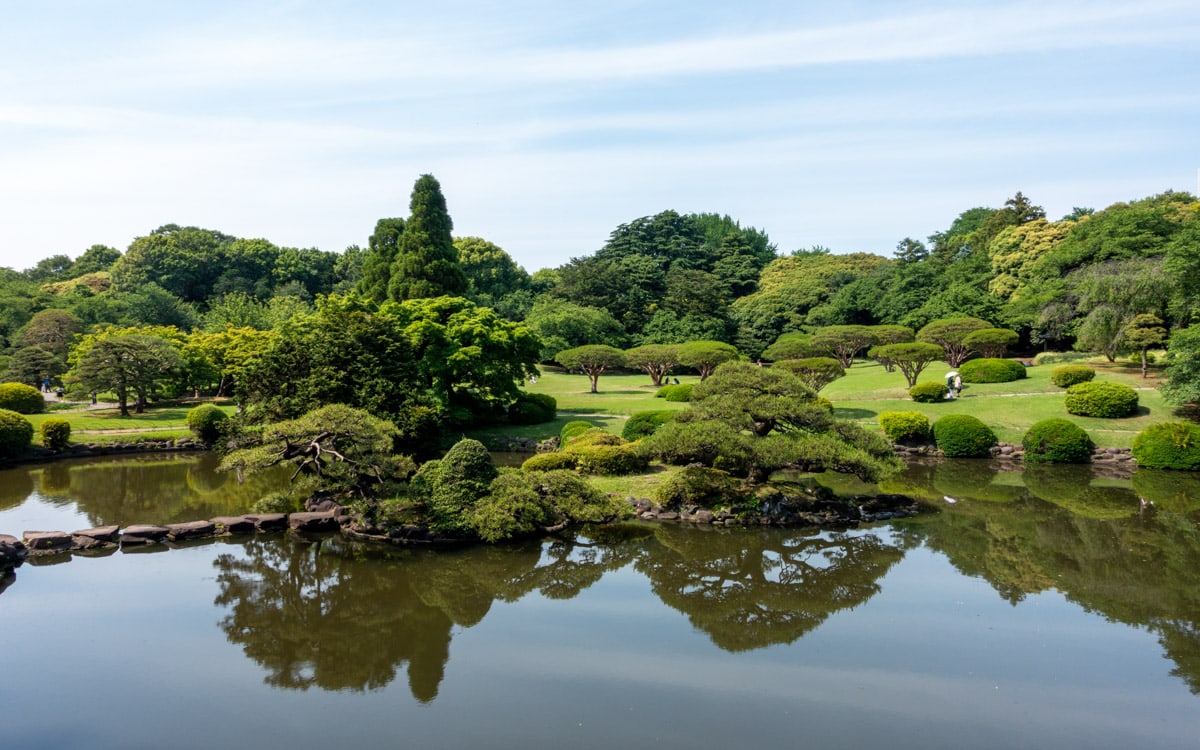
Shinjuku Gyoen National Garden, spanning across Shinjuku and Shibuya, is one of Japan’s most popular and important gardens. Covering an expansive 144 acres, Shinjuku Gyoen stands as one of Tokyo’s largest parks.
Although only minutes from Shinjuku Station, the park feels far removed from the city. This is thanks to its manicured trees, grass fields, forests, ponds, streams, and walking paths.
The history of Shinjuku Gyoen dates back to the Edo period. In 1772, the shōgun bestowed land to feudal lord Naitō of Tsuruga, who built a garden here. During the Meiji Restoration (1868-1889), the park grounds were used as an experimental agricultural center, a botanical garden, and an imperial garden.
During the later stages of World War II, air raids caused significant destruction to the garden. After the war, the garden was rebuilt. On May 21, 1949, the garden was officially opened to the public as a national park.
Today, the garden blends three garden styles including a traditional Japanese garden, English landscape garden, and French formal garden. Other highlights include a traditional Japanese tea house and a greenhouse which features over 1,700 tropical and subtropical plant species.
While a visit to Shinjuku Gyoen is a must any time of the year, the most popular time to visit is in the spring. This is when 1,500 cherry trees bloom from late March to early April. The contrast between the vibrant pink and white blossoms and the green trees and grass is a beautiful sight that attracts everyone from locals to tourists to photographers.
Hours
March 15-June 30 and August 21-September 30: 9:00AM-6:00PM
July 1-August 20: 9:00AM-7:00PM
October 1-March 14: 9:00AM-4:30PM
Closed on Mondays except March 25-April 24 and November 1-15
Entrance Fees
500 yen
3 – Omoide Yokocho (Memory Lane/Piss Alley)

No visit to Tokyo is complete without a visit to Omoide Yokocho. This atmospheric narrow alley, also known as Memory Lane or Piss Alley, is lined with tiny yakitori stalls and izakayas. Yakitori is a popular Japanese dish consisting of chicken skewers grilled over charcoal or an open flame.
The name Piss Alley dates back to the 1940s when the area was infamous for its numerous bars, clubs, and other drinking establishments. As these establishments had no toilets, customers used the adjacent train tracks to relieve themselves. Thankfully today, there are restrooms for guests to use.
Omoide Yokocho truly comes alive at night. This is when red lanterns illuminate the narrow alleyway and charcoal smoke billows out of open-fronted, hole-in-the-wall eateries. Walking down the alley evokes a sense of nostalgia while providing a glimpse into Tokyo’s past.
The best way to appreciate Omoide Yokocho is by dining at one of the small establishments. Don’t let the language barrier deter you. The experience of sitting at the counter, ordering yakitori and a cold beer, and striking up a conversation with other customers and the owner is unforgettable.
Omoide Yokocho will always hold a special place in my heart, as it has been the place where many unforgettable memories were made during my visits to Japan.
Hours
24 hours
Entrance Fees
Free
4 – Golden Gai
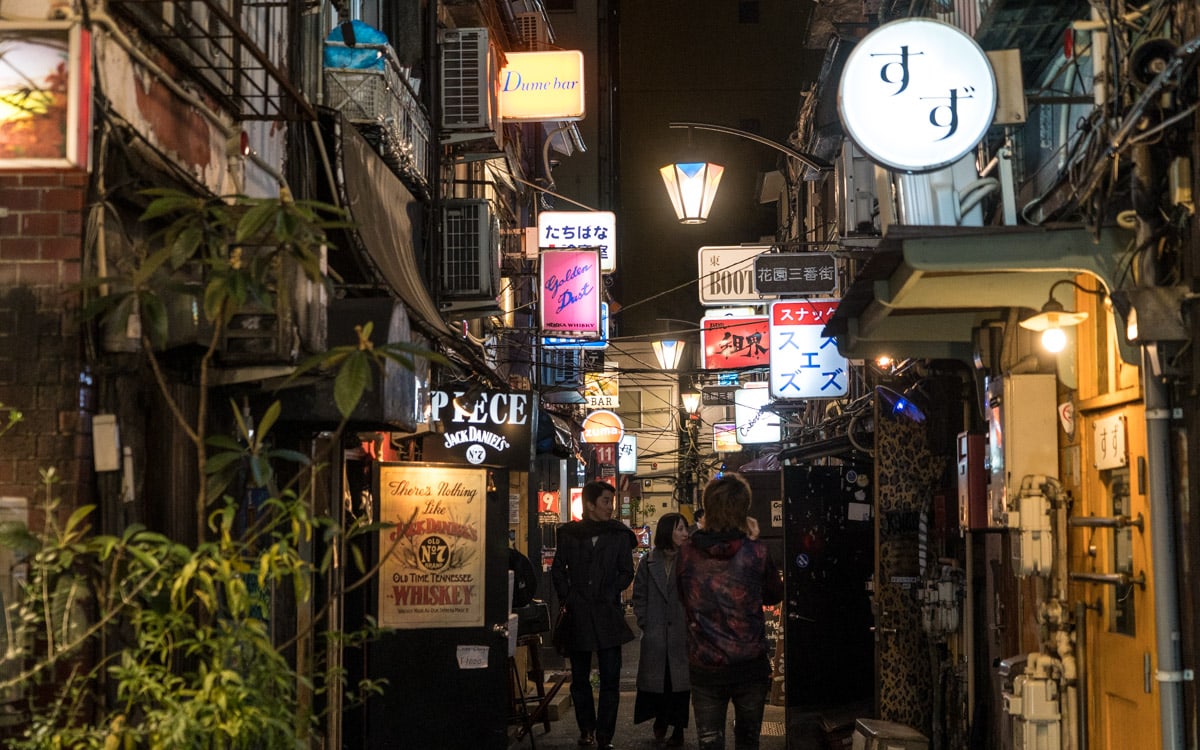
Golden Gai is a unique and vibrant district popular for its collection of over 200 tiny bars, each with its own character and atmosphere.
Much like the small yakitori eateries of Omoide Yokocho, the bars within Golden Gai offer a similar cozy experience. Some bars only have enough room for just a handful of guests. Each bar in Golden Gai has its own unique theme, ranging from heavy metal to jazz to rock ‘n’ roll.
Due to its uniqueness, Golden Gai attracts a diverse crowd. This includes locals, tourists, and businessmen. With such small spaces, it is not uncommon to strike up a conversation with fellow patrons or even the bar owners themselves. And, this is what makes Golden Gai a great place to visit. You never know who you are going to meet over a drink of beer, whiskey, or sake.
It’s important to note that some bars cater to Japanese while others are more welcoming to international visitors. And, some charge a cover fee to enter. But, don’t let this deter you from exploring the area.
Hours
Shop hours vary
Entrance Fees
Free
5 – Shopping
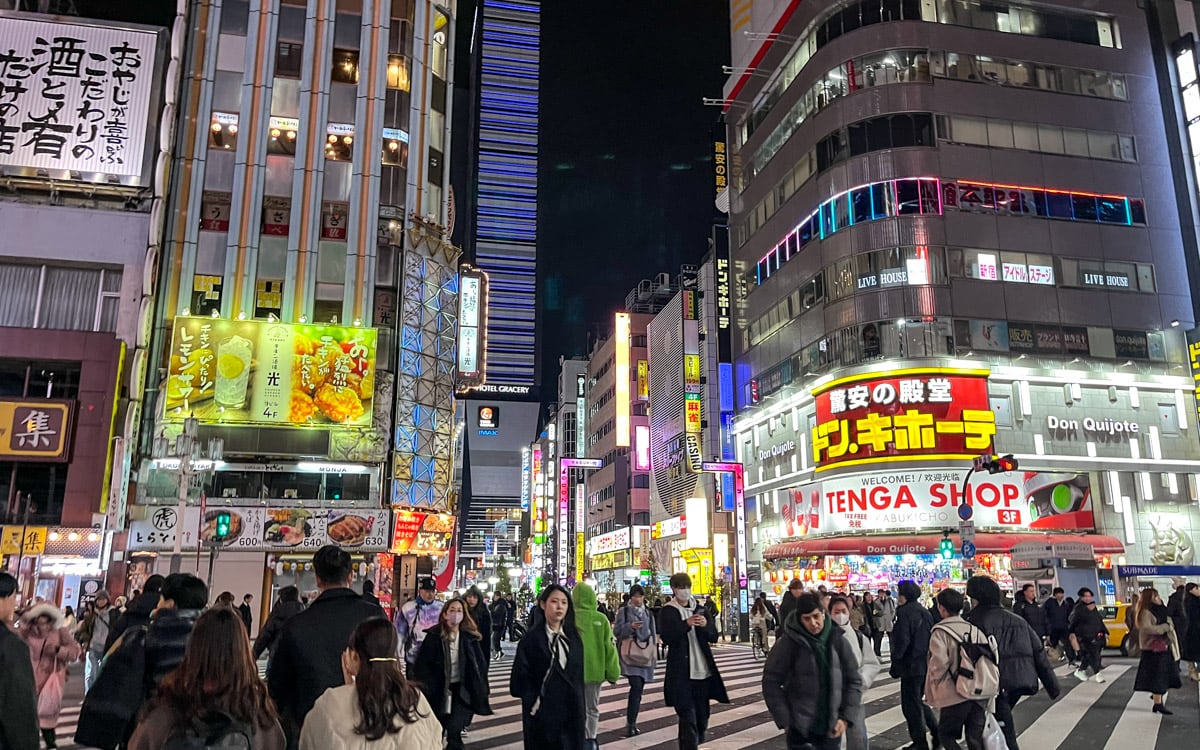
Despite being known as an entertainment district, Shinjuku also stands out as an exceptional shopping destination in Tokyo. Although Ginza may be synonymous with luxury shopping, Shinjuku caters to all shoppers looking for everything from high-end luxury brands to affordable discount stores.
One of the best places to shop in Shinjuku is around Shinjuku Station, which is one of the world’s busiest railway stations. Surrounding the station are large department stores including Lumine, Odakyu, Keio, and Takashimaya Times Square. These stores offer a broad range of clothing brands, both international and Japanese, as well as household goods, cosmetics, and more.
Don Quijote, also known as Don Don Donki or Donki, is a popular stop for locals and tourists. With numerous branches in Tokyo and over 160 stores worldwide, this discount retail giant offers a wide range of discounted goods. This includes souvenirs, clothing, electronics, household goods, toys, games, food, jewelry, and more. With multiple floors and millions of items, you are sure to find what you need.
Even if you aren’t shopping, a visit to Don Quijote is an experience in itself. And, they are open 24 hours a day.
Hours
Shop hours vary.
Entrance Fees
Free
6 – Godzilla Head

Godzilla, often referred to as the “King of the Monsters,” is a gigantic, prehistoric, radiation-powered sea monster that first appeared in the 1954 Toho Co. film “Godzilla.” Since then, Godzilla has become an international pop culture icon. You will find Godzilla in numerous Japanese and American films, as well as novels, video games, comic books, and television shows.
Toho Cinemas, the second-largest cinema chain in Japan, made a bold move in 2015 by installing a massive Godzilla head atop their building in Kabukichō. The towering 80-ton, 12-meter (40-foot) head is modeled after Godzilla’s look in the film Godzilla vs. Mothra (1992). In the years since, the head has become a landmark and tourist attraction in Kabukichō.
As you walk down Central Road, also known as Godzilla Road, the sight of the head perched above is remarkable. The height at 50 meters (164 feet) above the street matches that of Godzilla’s iconic appearances in the films.
If you want a close up view of the Godzilla head, take the elevator up to the eighth floor of Gracery Shinjuku Hotel. The head is located on the terrace, next to Bonjour Cafe. Although access to the terrace is technically limited to hotel guests and customers of Bonjour Cafe, during my visits, I found myself able to freely walk onto the terrace.
Between the hours of 12:00PM and 8:00PM, on the hour, visitors can witness a unique show where the head of Godzilla lights up, roars, and releases smoke.
Hours
Shows on the hour between 12:00PM and 8:00PM
Entrance Fees
Free
7 – Shin-Okubo (Koreatown)
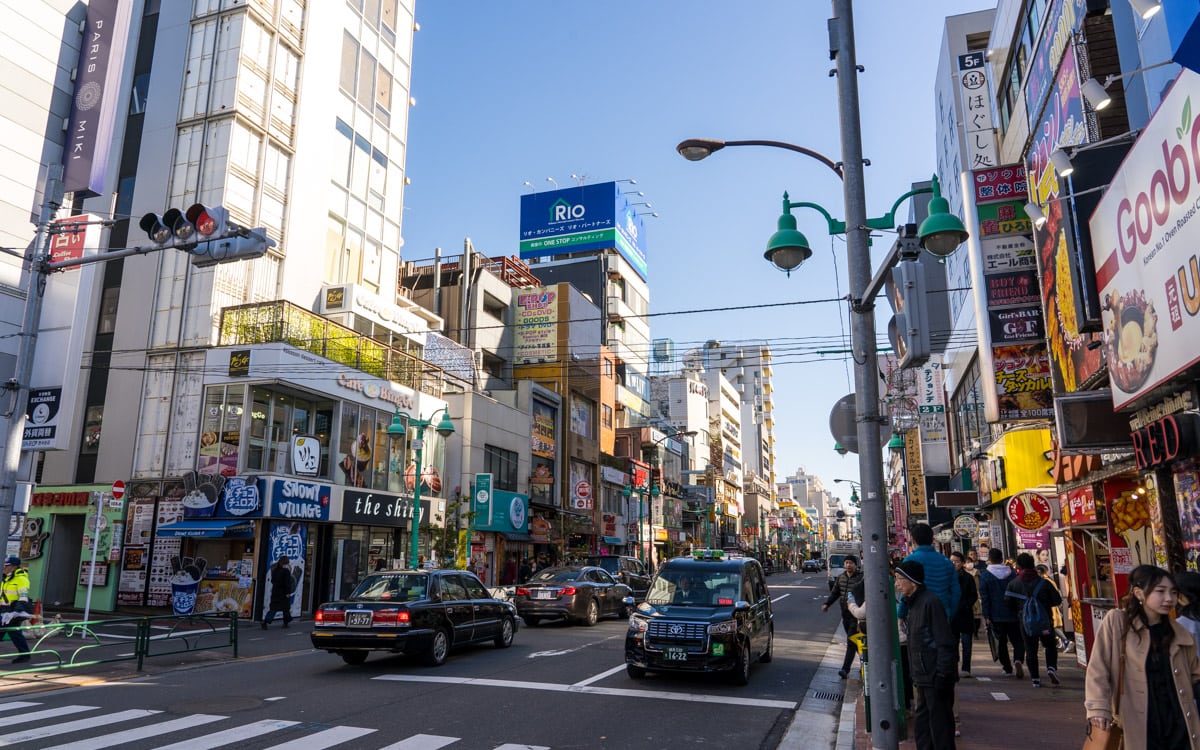
Located one stop north of Shinjuku Station is an area known as Shin-Okubo. This is Tokyo’s Koreatown, also known as Little Korea. This vibrant enclave, with a large concentration of Korean residents, is popular with locals and tourists who are interested in Korean cuisine, entertainment, and culture.
In the 1980s, Shin-Okubo gained popularity among Koreans due to its comparatively low living expenses. Over the years, many Korean businesses have opened in the area. With an array of businesses that cater to both Korean and Japanese customers, the area has become a melting pot of cultures.
Along the main street, Okubo-dori Street, are Korean restaurants, cafes, beauty shops, fashion boutiques, grocery stores, and K-pop stores. Those with an appetite for Korean cuisine will find restaurants offering BBQ, fried chicken, bibimbap, kimchi, and more.
Shin-Okubo is also a popular destination for fans of Korean pop culture and K-pop. The area boasts numerous stores that cater to enthusiasts, selling a variety of merchandise, including albums, posters, and other K-pop and K-drama-related items.
Hours
The area is open 24 hours. Shop hours vary.
Entrance Fees
Free
8 – Tokyo Metropolitan Government Building Observatories
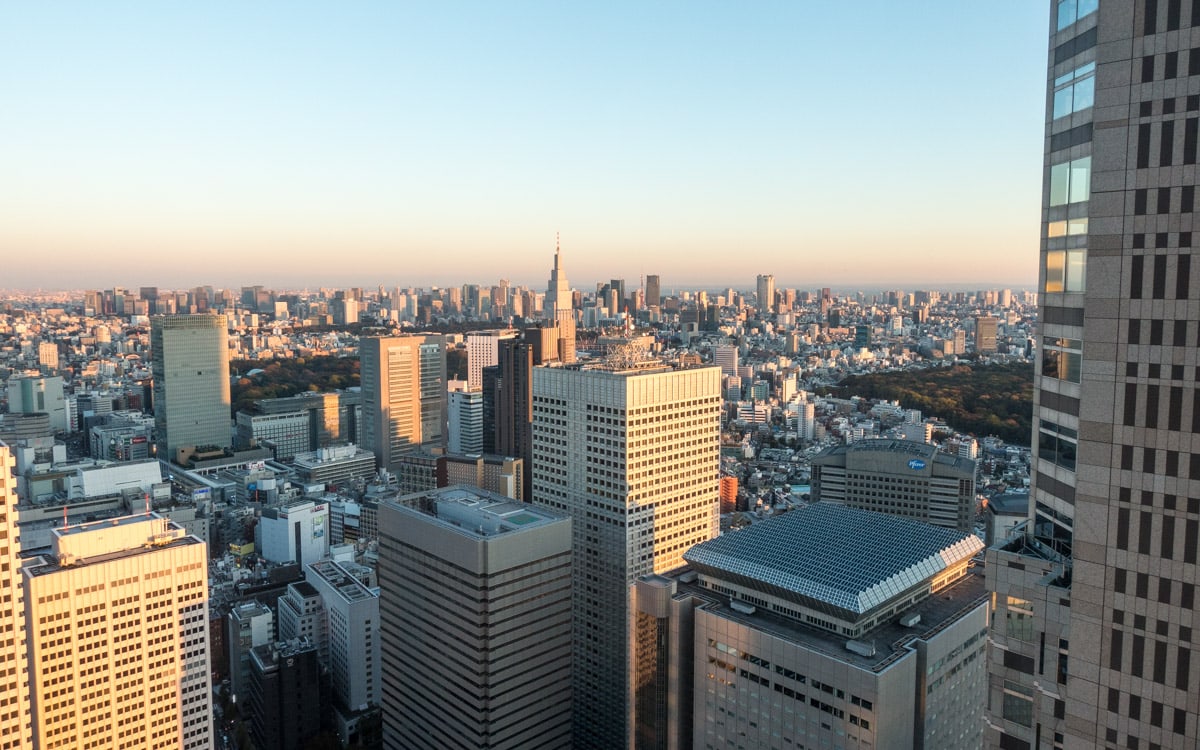
The Tokyo Metropolitan Government Building, also known as Tochō, serves as the headquarters for the governing body of Tokyo and its wards, cities, towns, and villages. Completed in 1990, the 242 meter (797 foot) building was the tallest building in Tokyo until the Midtown Tower opened in 2007.
The Tokyo Metropolitan Government Building features a dual-tower structure, each housing an observation deck at a height of 202 meters (662 feet). While the views from Tokyo Skytree (634 meters/2,080 feet) and Tokyo Tower (333 meters/1,092 feet) are far superior, the observatories at the Tokyo Metropolitan Government Building are free to visitors.
Each observatory, North and South, offer panoramic views of Tokyo and the surrounding areas. On a clear day, landmarks such as Mount Fuji, Shinjuku Gyoen, Meiji Shrine, Tokyo Skytree, Tokyo Tower, and the Tokyo Dome can be seen. At both observatories, you will also find a café and a souvenir shop.
As of 2023, only the south tower observation deck is open to the public. The north tower observation deck remains closed until further notice.
Hours
9:30AM-10:00PM
Last entry is 30 minutes before closing.
The south tower observation deck is closed on the 1st and 3rd Tuesday of each month
Entrance Fees
Free
9 – Robot Restaurant
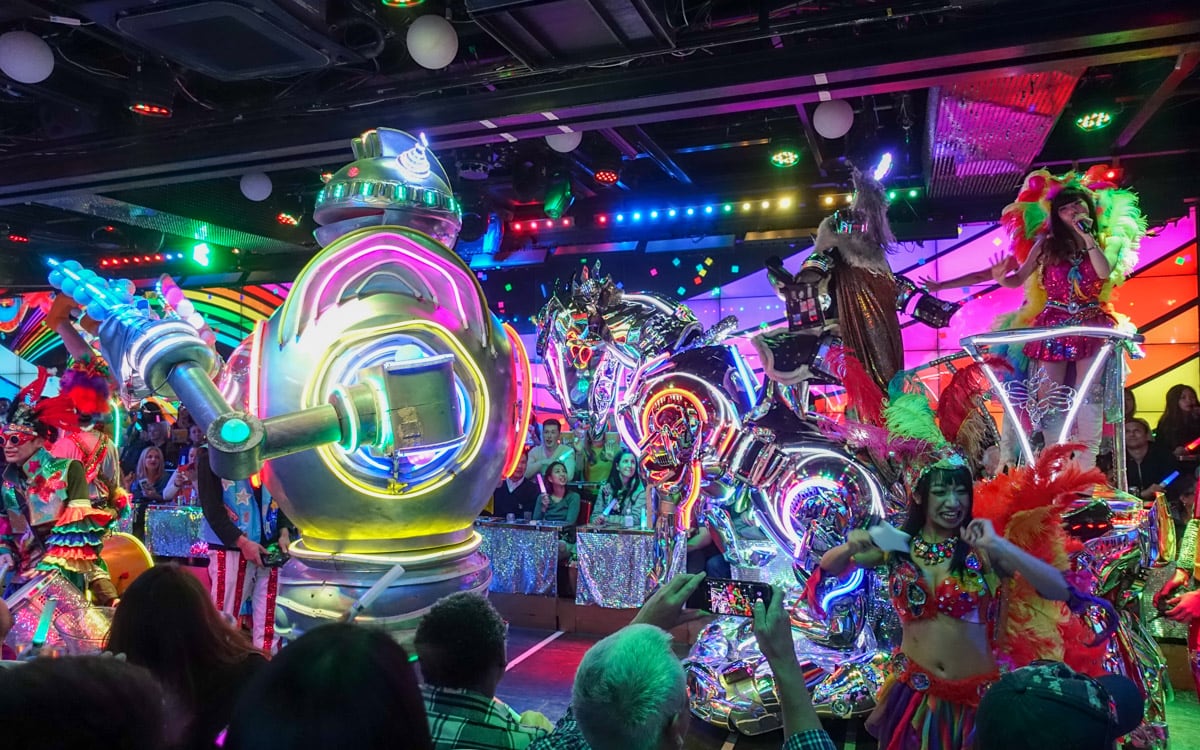
I first learned about the Robot Restaurant when Anthony Bourdain visited Tokyo on his show “Parts Unknown.” When he called it the “greatest show in the history of entertainment,” I knew I had to check it out for myself. And, I am glad I did.
I am not sure how to describe the show. The show featured so many WTF moments including giant robots, dancers, girls on poles, tanks, a marching band, dinosaurs, neon lights, singing, techno music, and much, much more. The show is an assault on all of your senses and will leave you confused yet satisfied at the same time. I would describe the show as so bad that it was good.
Sure it is touristy and caters to foreigners. And, it is expensive. But I believe everyone should see the crazy, unbelievable, confusing, insane, strange Robot Restaurant show once in their life. Seriously, go see it for yourself.
As of 2024, the Robot Restaurant is know known as Samurai Restaurant Time.
Hours
Daily shows
Entrance Fees
8000 yen
10 – Meiji Jingu Gaien

Meiji Jingu Gaien, or Meiji Shrine Outer Garden, is a tranquil and picturesque park that offers a combination of natural beauty, sports facilities, and cultural attractions. Whether you’re interested in sports, history, or enjoying a peaceful day outdoors, Meiji Jingu Gaien caters to a variety of interests.
Meiji Jingu Gaien is named after nearby Meiji Shrine. After construction on the shrine was completed in 1920, the surrounding area was transformed into a park to complement the shrine.
In 1926, the Meiji Memorial Picture Gallery opened. The gallery commemorates Emperor Meiji’s reign and displays artifacts and paintings from the Meiji era (1868-1912). Meiji Jingu Stadium, which also opened in 1926, is the home stadium for the Tokyo Yakult Swallows professional baseball team.
In addition to sports, Meiji Jingu Gaien offers recreational activities such as walking, jogging, and cycling. The park’s wide open areas provide ample space for picnics and other outdoor gatherings.
The park’s broad avenues are made all the more beautiful in the fall when ginkgo trees turn a stunning golden shade. In contrast, spring paints the park in vibrant pink tones as over 400 cherry trees come into bloom. During this season, people take part in hanami, a tradition of picnicking beneath the cherry blossoms.
Hours
The public areas are open 24 hours
Entrance Fees
Free
11 – Hanazono Shrine

Nestled in the heart of Shinjuku, steps away from Golden Gai, is the historic Hanazono Shrine. Surrounded by towering skyscrapers, the shrine provides a peaceful escape for visitors.
Hanazono Shrine is devoted to Inari, a kami (God) associated with fertility and business prosperity. It is quite common to witness salarymen praying at the shrine, hoping for success in their professional endeavors.
This historic Shinto shrine was originally founded in 1590, before the start of the Edo period (1603-1868). During this period, the shrine was located 820 feet (250 meters) to the south. The present-day location of the shrine was established in the 17th century on land which was once a vibrant flower field. The shrine’s name, Hanazono, means “Flower Garden” in Japanese.
Over the centuries, Hanazono Shrine has been damaged and destroyed by fires and wars, including during World War II. While the shrine as seen today was rebuilt in 1965, the lion-dog statues (komainu) found at the entrance of the shrine date back to the 18th century.
Today, Hanazono Shrine holds many events and festivals including the Setsubun Festival in February and Tori-no-Ichi Festival in November.
Hours
24 hours
Entrance Fees
Free
12 – Ramen
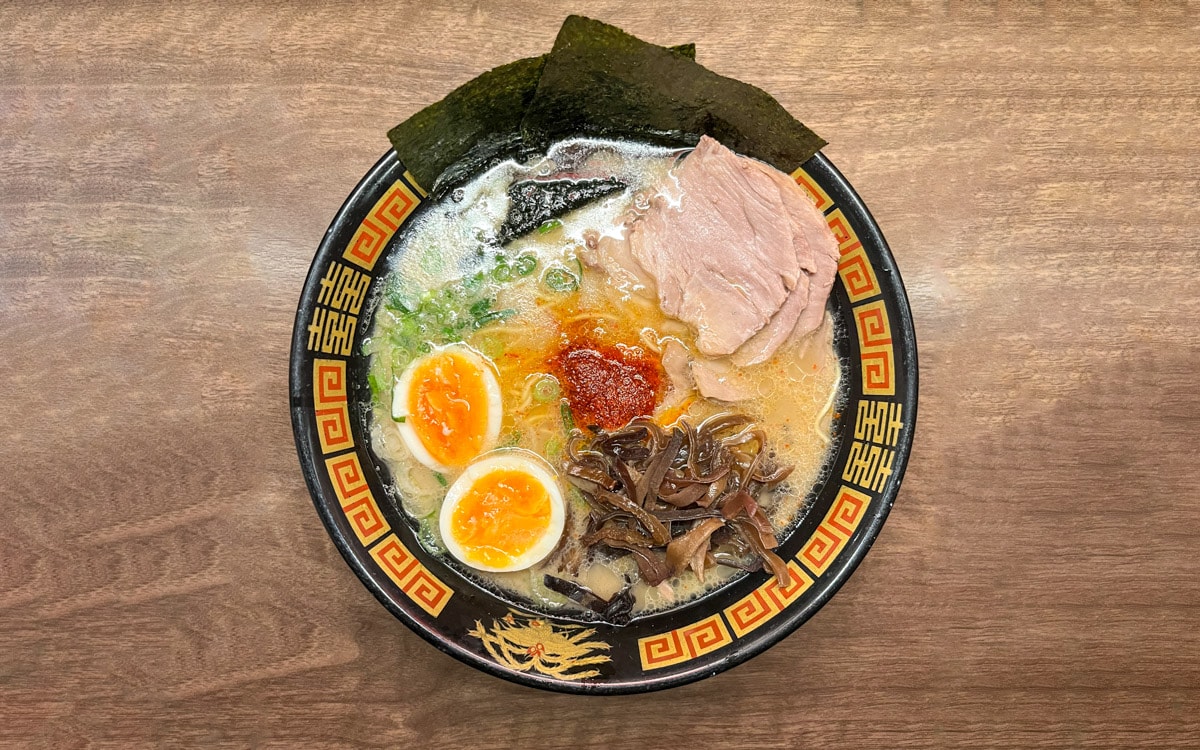
While ramen is not exclusive to Shinjuku, with so many great ramen restaurants in the area, I couldn’t make a list without including the ubiquitous bowl of ramen. Shinjuku offers an extensive variety of ramen types, including tonkotsu (pork bone), shoyu (soy sauce), shio (salt), miso, and tsukemen. Furthermore, Shinjuku is home to a wide range of ramen establishments, from standing-only shops to Michelin-starred restaurants.
Some of my favorite ramen shops in Shinjuku include Ichiran for their tonkotsu ramen, Menya Musashi for their ramen with thick noodles and even thicker braised pork belly, and Fuunji for their tsukemen dipping ramen.
Other than ramen, Shinjuku is home to endless restaurant options serving everything you can think of from sushi, to yakitori, to fast food. Some of my favorite non-ramen restaurants include Gyukatsu Motomura for their breaded beef cutlet and Numazuko for their conveyor belt sushi.
Hours
Shop hours vary
Entrance Fees
A typical bowl of ramen is about 1000 yen
13 – Yotsuya Suga Shrine
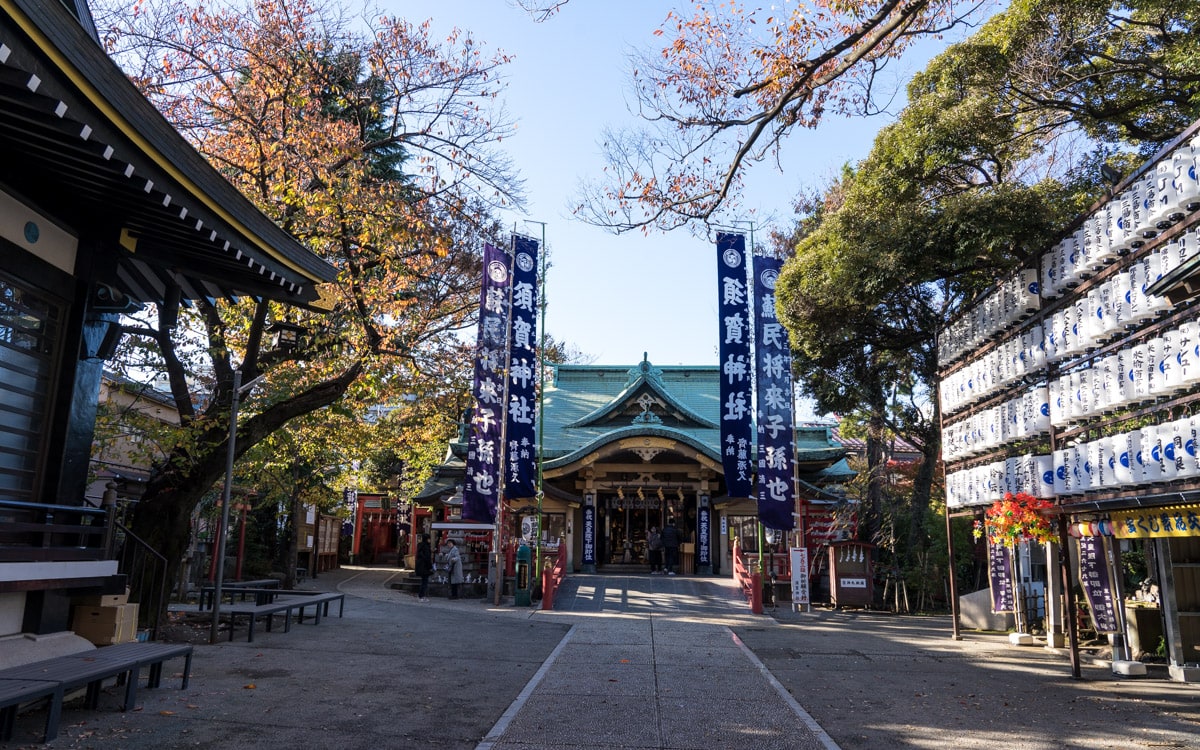
Yotsuya Suga Shrine, a lesser-known Shinto shrine to many international visitors, can be found east of Shinjuku Gyoen National Garden. The shrine is thought to have been established in the early Edo period around the 17th century.
Originally two separate shrines, after the Meiji Restoration, the two shrines merged into one. Yotsuya Suga Shrine is dedicated to Susanoo-no-Mikoto and Kushinadahime, both kami (God) in ancient Japanese mythology.
Inside the shrine are 36 individually framed silk paintings of Sanjurokkasen (The Thirty-Six Immortals of Poetry). Completed in 1836 by painter Ōoka Unpo, these paintings depict a group of poets from the Asuka (592-710), Nara (710-794), and Heian periods (794-1185). These poets were renowned for their poetic ability.
Other sites of interest include the Yotsuya Mitsuke memorial stone, the stone torii gate, and lion-dog statues (komainu) which date back to 1728.
The shrine gained international fame when it was prominently featured in the 2016 blockbuster anime movie “Your Name” (Kimi no Na wa). The iconic stairs leading to the shrine became a focal point in the movie, transforming the shrine into a must-visit site for devoted fans. The shrine has embraced this newfound attention by providing special “Your Name” wooden wishing plaques (ema) for visitors to leave their prayers and wishes.
Hours
9:00AM-5:00PM
Entrance Fees
Free
14 – Zenkokuji Temple

Zenkokuji Temple is a Buddhist temple and a well-known landmark situated in the Kagurazaka neighborhood on the eastern side of Shinjuku City. Though Zenkokuji is modest in design and its grounds are smaller than other temples in Tokyo, the temple’s intimate atmosphere, coupled with its rich history and location, adds to its charm and attractiveness.
Zenkokuji was first built in 1595 under the orders of Tokugawa Ieyasu. Ieyasu, was one of three “Great Unifiers” of Japan and was first shōgun of the Tokugawa Shogunate which ruled from 1603 until 1868. Originally, the temple was situated to the east in Nihonbashi Bakurocho, part of Chūō City. After fires in 1670 and 1792, the temple was relocated to Kagurazaka.
The temple worships Bishamonten, also known as Vaiśravaṇa. Bishamonten is one of Seven Gods of Fortune in Japanese mythology. Often depicted as a warrior-king, Bishamonten is the god of warfare and considered to be a protector of warriors and a punisher of evildoers.
Throughout the year, the Zenkokuji Temple is home to numerous traditional events and festivals, with the Bishamonten Festival being the most notable. This highly anticipated festival takes place in both April and November. At the festival, guests can immerse themselves in Japanese religious practices while enjoying parades, food stalls, and traditional performances.
Hours
7:00AM-7:00PM
Entrance Fees
Free
15 – Shinjuku Central Park
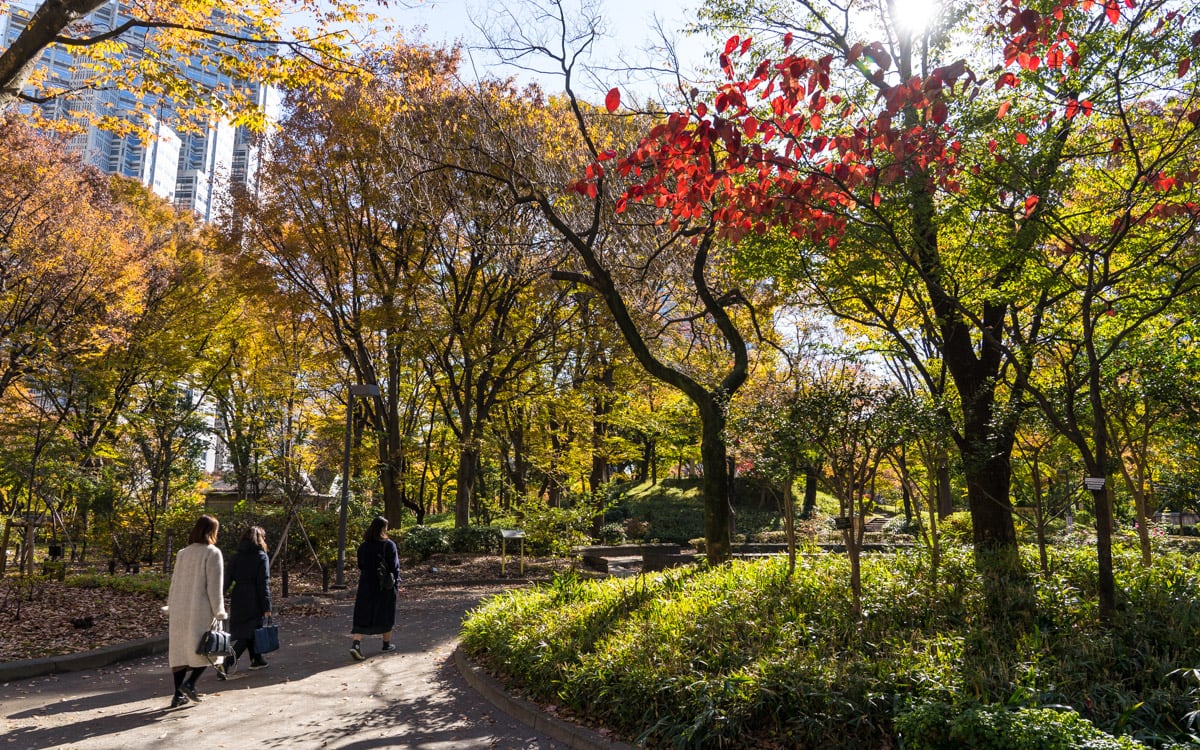
Shinjuku Central Park, also known as Shinjuku Chūō Kōen, is a small but peaceful park located west of Shinjuku Station. Thanks to its convenient location amidst office buildings, the park has gained popularity among office workers as an ideal spot to spend their lunchtime.
Though not as famous as Shinjuku Gyoen National Garden, Shinjuku Central Park draws in its fair share of tourists seeking a break from the city.
Conceptualized in 1960, the sprawling metropolitan park replaced the former Yodobashi Water Filtering Plant. Its inauguration in 1968 marked a significant milestone in the development of the new city center project. Significant renovations took place in the 1970s, reshaping the park into the space it is today.
The park consists of three areas, namely the North, East, and West sections, with each connected by bridges. In the North is a Citizen’s Forest, a thriving biotope, an inviting water plaza with Shinjuku Niagara Falls, a sprawling lawn area, and a designated sports corner. The West area features a pool and playground, both popular with children. The East area features athletic grounds where individuals can engage in activities such as jogging, playing futsal, and more.
Hours
24 hours
Entrance Fees
Free
16 – Samurai Museum
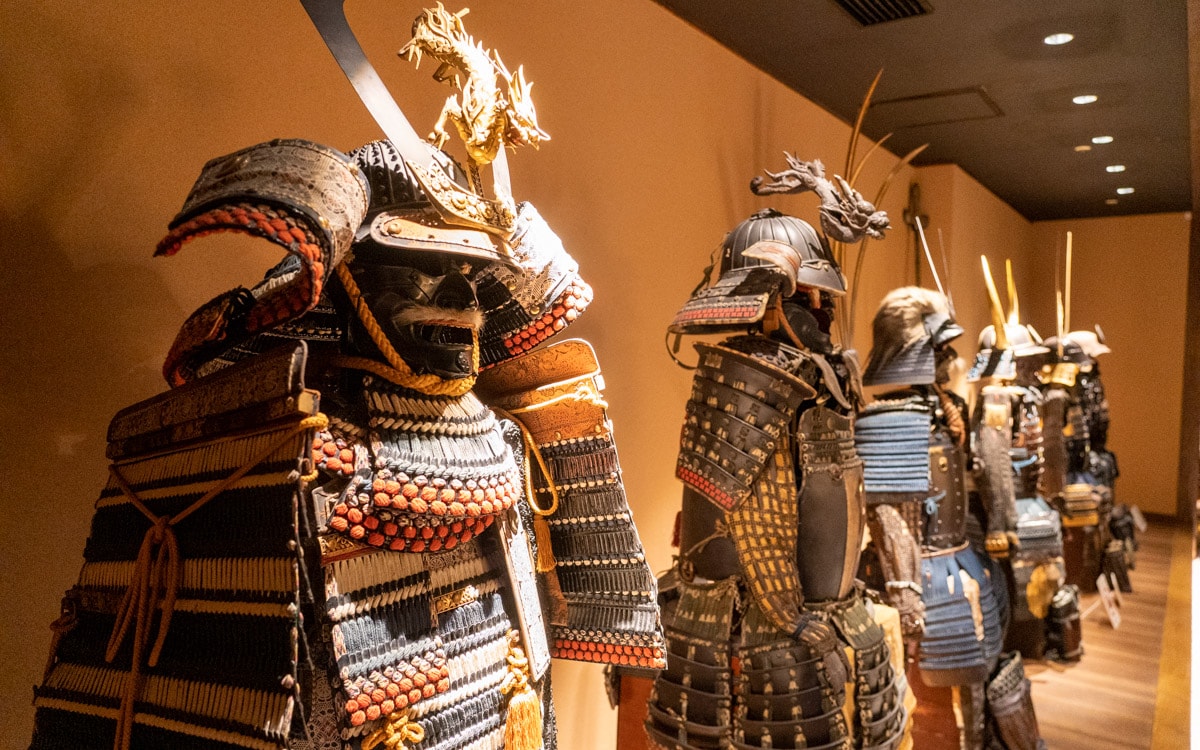
The Samurai Museum, located a few blocks away from Golden Gai, is the first of two museums on this list. At this museum, visitors will learn about samurai. The samurai were a class of highly skilled warriors prevalent in Japan from the 12th century until their abolishment in the late 19th century.
The Samurai Museum offers visitors the opportunity to dive into the world of the samurai while exploring their identity, beliefs, and combat techniques. Fascinating exhibits showcase a diverse collection of samurai armor, helmets, swords, and other artifacts, each rich with Japanese history.
Guided tours in English present an opportunity for visitors to broaden their understanding of the vibrant samurai history. Numerous fascinating aspects of samurai culture are explored during these tours while guides will answer and questions.
Other than tours, the museum offers multiple experiences and performances. This includes a sword performance, calligraphy lessons, a Japanese sword lecture, a traditional music show, and the opportunity to wear a samurai helmet and battle coat.
Hours
Sunday-Friday: 10:30AM-9:00PM
Saturday: 10:30AM-8:00PM
Last entry is 30 minutes before closing.
Entrance Fees
Adults: 1900 yen
Children (under 12): 800 yen
Children (3 and under): Free
17 – LOVE Sculpture

If you have been to Philadelphia, odds are you have stumbled upon the LOVE Sculpture, an artwork located in LOVE Park (John F. Kennedy Plaza). This iconic sculpture has come to symbolize love, unity, and compassion and as a message of hope and togetherness.
In 1970, American artist Robert Indiana unveiled the first LOVE sculpture in Indianapolis. Since then, his iconic artwork has undergone various incarnations, spreading its influence and appearing in urban centers around the globe. Today, these sculptures can be found across the United States, Canada, Europe, South America, and Asia.
There are currently two LOVE Sculptures found in Japan. This includes one sculpture in nearby Chiba and another one located in front of the Shinjuku i-LAND Tower in Nishi-Shinjuku. Since being installed in 1995, this LOVE Sculpture has been a hidden landmark of Shinjuku and a meeting place for couples and friends.
Hours
24 hours
Entrance Fees
Free
18 – Fire Museum
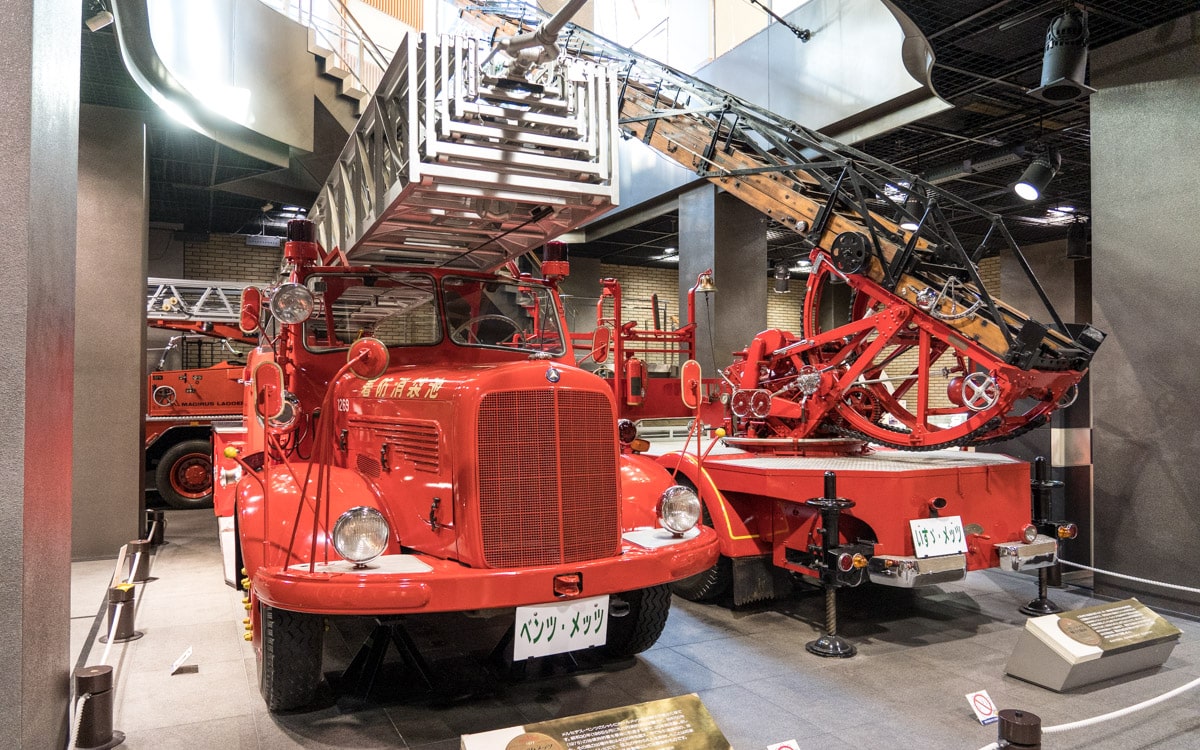
The Fire Museum, officially known as the Tokyo Fire Department Firefighting and Disaster Prevention Reference Center, is a museum located in the Yotsuya Fire Station. Opened on December 3rd, 1992, the museum teaches visitors about the history of fire fighting in Tokyo from the Edo period until present day. And best of all, the museum is free to enter.
The museum is spread over several floors and your tour begins on the top floor. As you pass through the museum, you’ll discover exhibits that include models of samurai firefighters, historic fire trucks, historical firefighter uniforms, vintage fire pumps, motorcycles, ambulances, emergency gear, fire hoses, and more.
The 5th floor provides an insight into firefighting of the Edo period. You will also find a helicopter on the terrace of this floor, where you can explore the cockpit. Moving down to the 4th floor, visitors can explore advancements in firefighting techniques that took place from the Meiji era through the early Shōwa era. On the 3rd floor, you can learn of the evolution of the modern fire service. On the 1st floor, you will find the museum entrance, another helicopter, and a mini theater. Lastly, the basement level (B1) is home to a display of seven fire engines from the Taishō era through the Heisei era.
If you are a fan of firefighting history, are traveling with kids, or just enjoy a free museum, then the Fire Museum is a worthwhile stop.
Hours
9:30AM- 5:00PM
Closed on Mondays
Entrance Fees
Free
19 – Kagurazaka
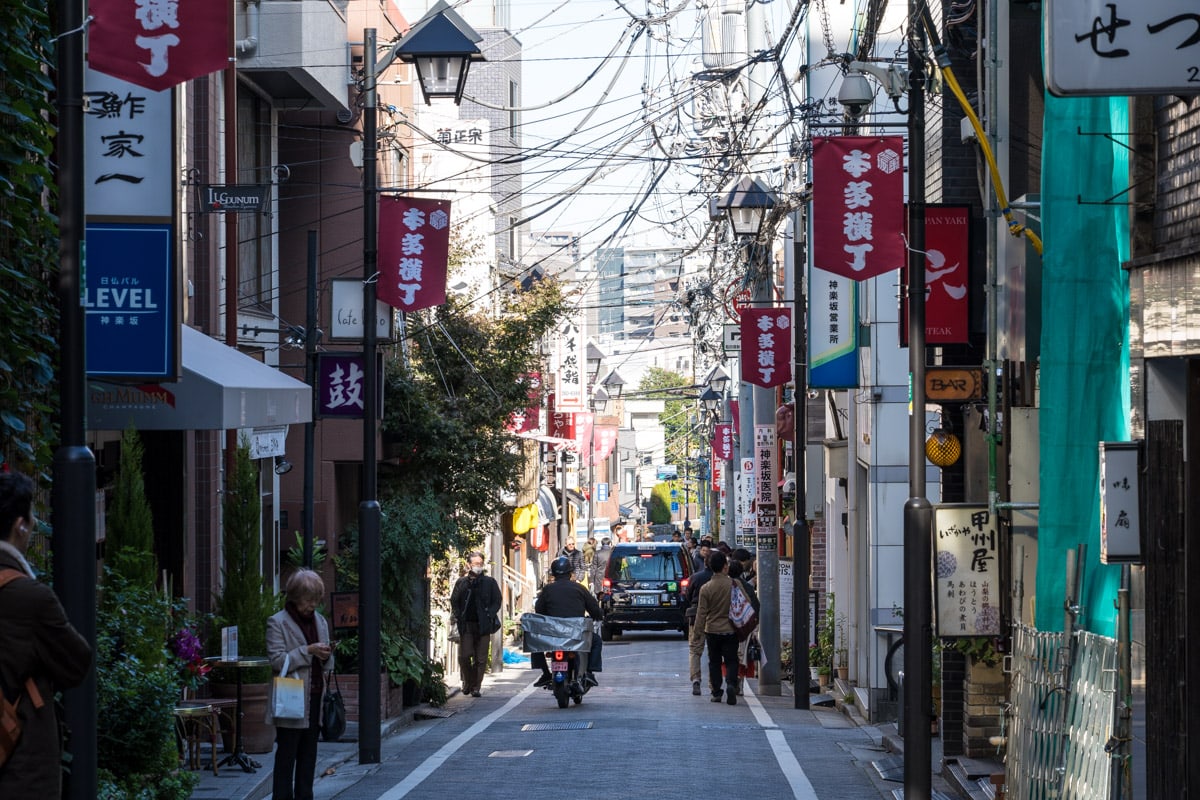
Kagurazaka is a fashionable neighborhood known for its traditional Japanese atmosphere, narrow cobblestone alleys, and upscale restaurants.
During the Edo period, Kagurazaka was located on the outer moat of Edo Castle. Due to its location, the area was known for its entertainment including numerous geisha houses. Several of them remain to this day.
Kagurazaka-dori, the main street of Kagurazaka, stretches between Iidabashi Station and Kagurazaka Station along a gentle slope. Along this street, you will find many upscale shops, cafes, restaurants, and traditional Japanese restaurants known as ryōtei. The main street is just the starting point, leading to a network of narrow alleys where even more establishments can be found.
While Kagurazaka is famous for its traditional Japanese charm, the neighborhood exhibits a notable French influence as a result of two French schools situated in the area. With a significant population of French expats, Kagurazaka boasts the largest concentration of French eateries, bakeries, and cheese shops in Tokyo.
Throughout the year, Kagurazaka hosts multiple annual events such as the Awa Odori Festival, O-edo Tour, Bakeneko Festival, Machi Tobi Festa, and Kagurazaka Matsuri
Hours
24 hours
Entrance Fees
Free
20 – Juniso Kumano Shrine
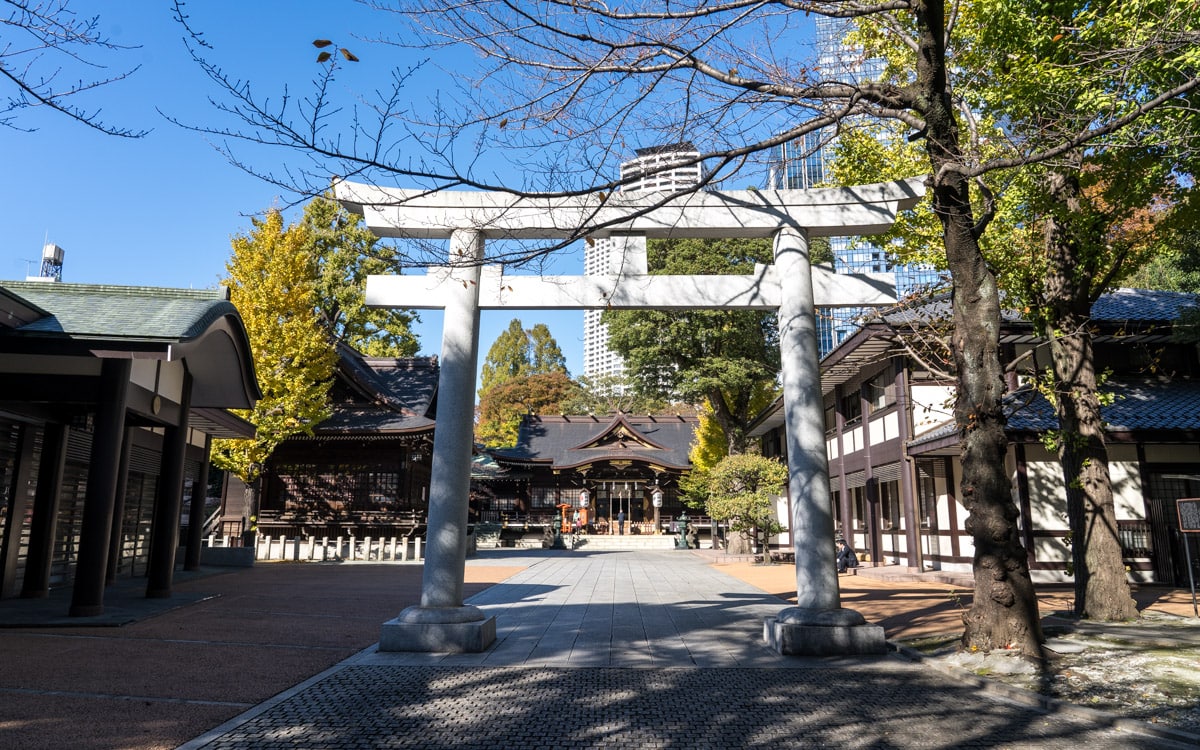
Juniso Kumano Shrine is a small Kumano shrine located adjacent to Shinjuku Central Park. Kumano shrines are Shinto shrines which enshrine Hongū, Shingū, and Nachi, three Kumano mountains. There are over 3,000 Kumano shrines in Japan.
Juniso Kumano Shrine dates back to 1403 during the Muromachi period (1336-1573). At this time, a Shinto believer named Kuroh Suzuki helped the shrine branch out from a larger, and more famous shrine located in present day Wakayama Prefecture. At the time, there were ponds and waterfalls in the surrounding area.
The Tokugawa shogunate, also known as the Edo shogunate, supported the shrine by repairing and refurbishing shrine buildings. After hunting in the surrounding area, shoguns would often pray at the shrine.
While there are many beautiful shrines in Tokyo, Juniso Kumano Shrine is somewhat of a hidden gem, missed by most tourists. If you are looking for a shrine were locals come to pray, then this is a great choice.
Hours
24 hours
Entrance Fees
Free
21 – Shinjuku Station
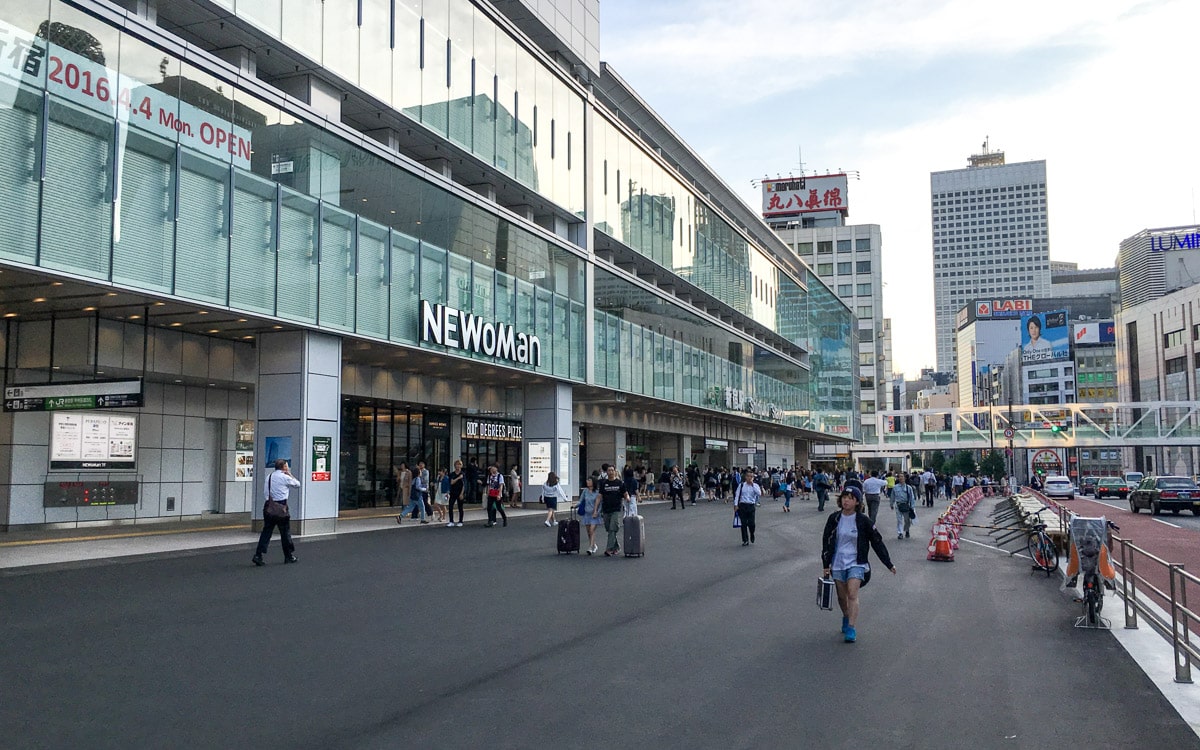
I know it seems strange to include a railway station on my list of the best things to do and see in Shinjuku, but Shinjuku Station deserves to be on this list. In 2018, over 3.5 million people used the station per day. According to Guinness World Records, this made Shinjuku Station the busiest train station in the world.
Shinjuku Station dates back to 1885 when the station was a stop on Japan Railway’s (JR) Akabane-Shinagawa line, now part of the Yamanote Line. Over the years, the number of passengers increased as new lines opened. This includes the Chūō Line in 1889, the Keiō Line in 1915, and the Odakyū Line in 1923. The large public square at the west exits opened in 1941.
Over the years, the station has expanded, adding new train lines and platforms. Today, there are currently 35 platforms used by both JR and multiple private railways. And, if you can believe it, there are over 200 exits.
While there is not a Shinkansen stop at Shinjuku Station, most tourists will pass through the station at least once on their trip to Japan. Even if you aren’t traveling by train, it’s worth stopping at Shinjuku Station as there are many restaurants and shopping opportunities in and around the station. And, it makes for great people watching.
Hours
24 hours
Entrance Fees
Free
Last Updated on April 7, 2024
Related Posts